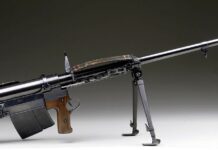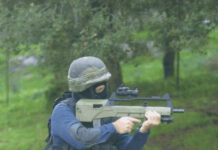
What’s old is new, and new is old. The first 40mm grenade launchers were stand-alone weapons, and in the United States, the M79 ruled. It became a force multiplier in Vietnam. Soldiers had a very man-portable option to chuck 40mm grenades at the enemy. It offered the squad some minor indirect firepower and made getting through entrenched enemies in hardened positions possible. The problem was that the grenadier was vulnerable to close-range enemy fighters, and the solution was the Beehive Flechette loads and the M576 Buckshot loads.
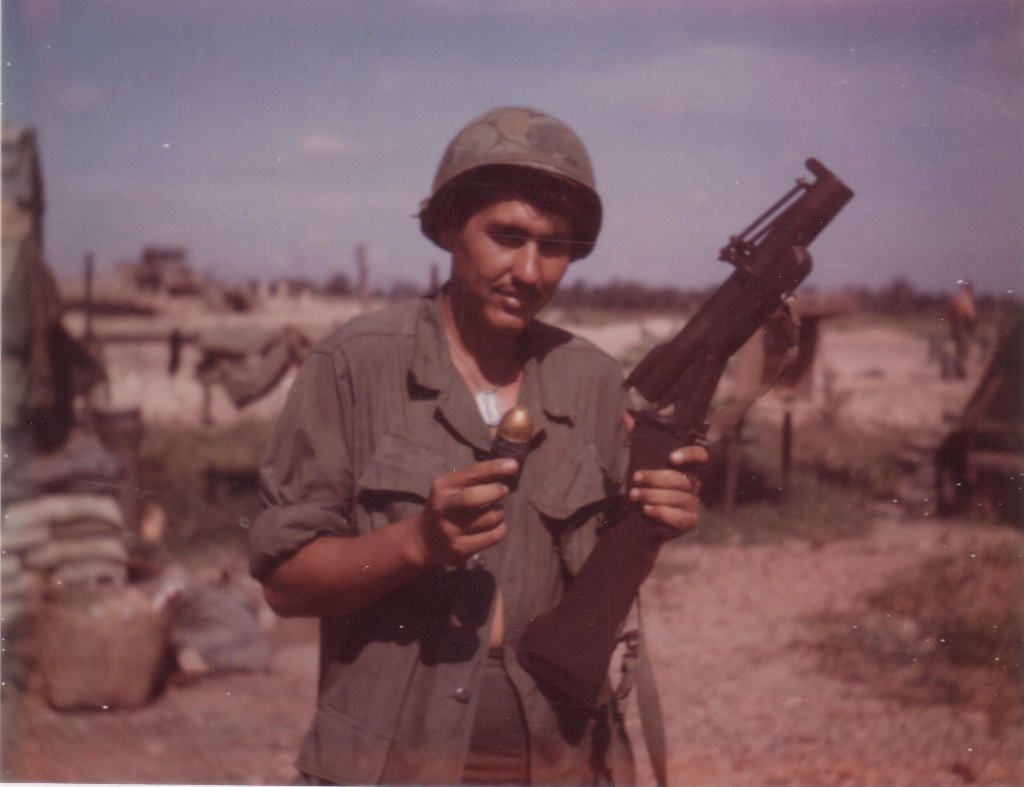
Soldiers carrying the M79 often also carried M1911A1 pistols as a close-range personal defense weapon. I will say that was likely an optimistic idea. Sadly the military likes to hand pistols to officers who really don’t need them and leave soldiers carrying multiple weapons or lack a personal defense weapon. Even if the soldier had an M1911A1, well, we have to accept that handguns suck for fighting. Long guns offer more lethality, range, and capability.
In the middle of a firefight, as you close on the enemy, your grenade launcher might become somewhat useless. At close range, you have two problems. First, 40mm grenades have a specific arming range before they explode. Second, grenades send fragments for tens of meters, and you can’t be extremely close when you use one. So, the Army went about developing close-range killing rounds to better arm grenadiers for combat.
The M79 Flechette Rounds
In Vietnam, the US Army was really fascinated with flechettes. Flechettes were stocked in shotgun rounds and artillery rounds, and eventually, the 40mm grenades. The Army had this idea that flechettes would act like buckshot in terms of spread but as regular projectiles in terms of penetration and range.
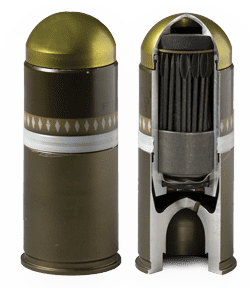
Try as a I might, I cannot find an official designation for 40mm Flechette rounds. Some of the Vietnam archives at Texas Tech refer to them as Beehive rounds. Beehive was also a term used for the flechette artillery rounds used in combat. The 40mm flechette rounds packed 45 fin-stabilized needle-like rounds. They were loaded into a plastic sabot.
When fired, the sabot fell away, and the projectiles traveled onward. Like most flechette experiments, the darts never remained stable enough to make it very far. Even at close ranges, the flechettes would hit with the back o sides more often than with the pokey part. They were quickly done away with.
The Buckshot Option
The M79 isn’t much different than a shotgun. It’s an unrifled, break action tube. Shoving buckshot into one made it a modern blunderbuss. These became the M576 round. They held twenty 00 pellets. That’s more than twice of what a single shotgun round held. They did some experiments with 27 pellets without a sabot, but the round didn’t work well, so 20 was the magic number.

The rounds moved fairly slowly at 880 feet per second. For comparison, a military load of 9 pellet 12 gauge 00 buckshot moved at 1,325 feet per second. They offered a decent range, with 13 of the 20 pellets consistently hitting a 1.5-meter-sized circle. The other seven did whatever they wanted.
The round certainly offered a lot of firepower up close, and the spread helped ensure a good hit in a running gunfight. Sadly, I’m sure the grenadiers still felt under-gunned. Fighting in a war with a single-barreled shotgun against bad guys with AKs sounds and is terrifying.
The End of Close Range 40mms
Once the M203 came about, the grenadier position no longer needed a buckshot load. He had a rifle and grenade launcher at the ready. This more or less eliminated the idea of the M576. That’s not to say similar rounds don’t still exist, as the M1001 from General Dynamics promises a flechette round that’s much more effective and designed for the MK-19.
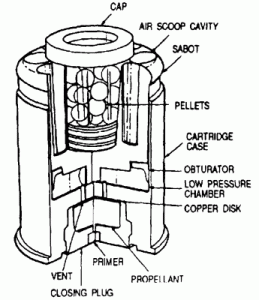
Tat’s a subject for another day. It seems that the US is returning to single-shot grenade launchers with the popularity of M302. However, this lighter, more compact 40mm grenade launcher is still carried alongside an M4. The days of buckshot 40mm seem to be at an end.
With that said, how big can we make a Flitecontrol wad?

